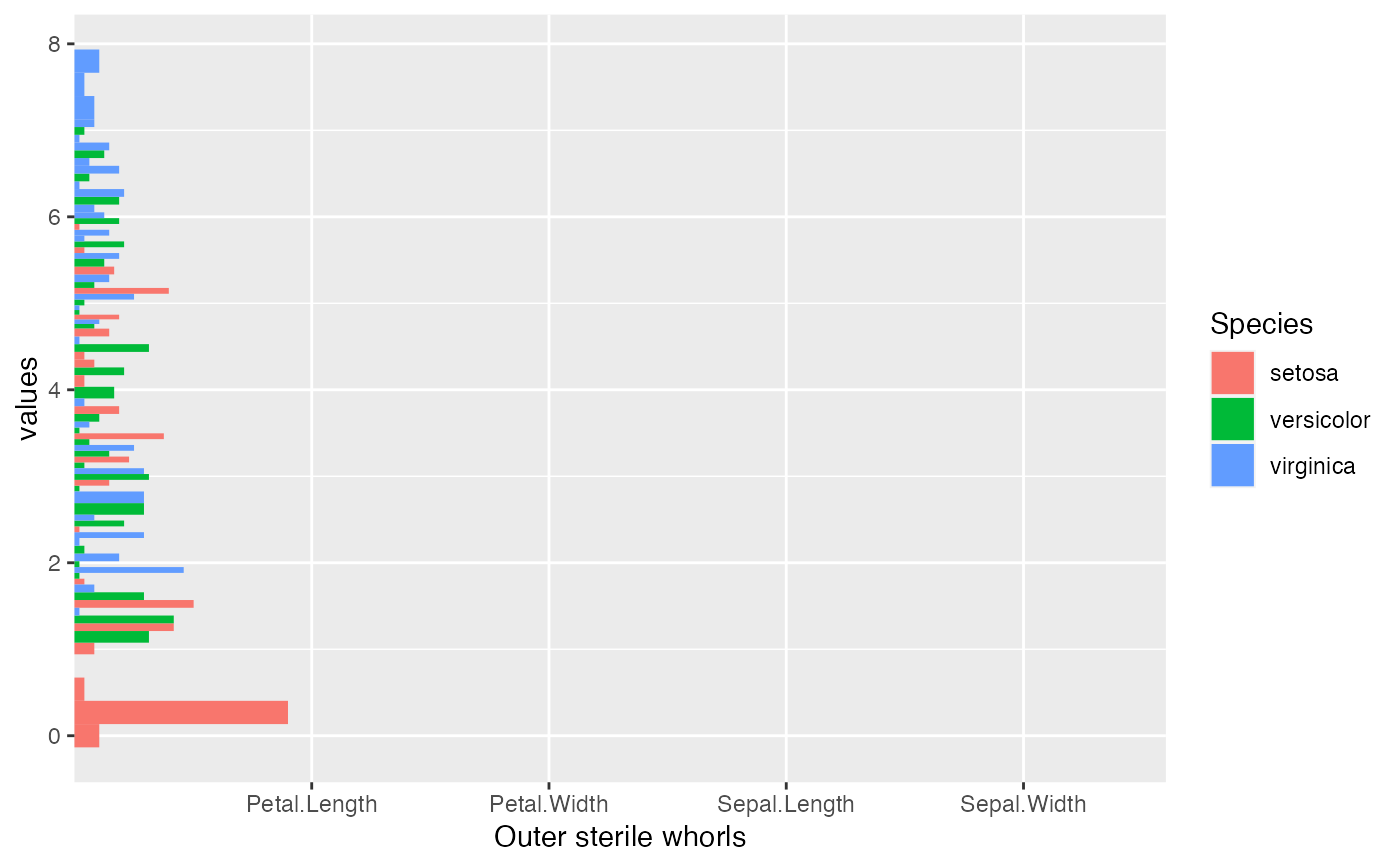Dodge overlapping objects side-to-side
position_dodge_.RdDodging preserves the vertical position of an geom while adjusting the horizontal position.
position_dodge_() dodges bars side by side but conditional on locations.
Arguments
- width
Dodging width, when different to the width of the individual elements. This is useful when you want to align narrow geoms with wider geoms. See the examples.
- preserve
Should dodging preserve the
"total"width of all elements at a position, or the width of a"single"element?- padding
Padding between elements at the same position. Elements are shrunk by this proportion to allow space between them. Defaults to 0.1.
- reverse
If
TRUE, will reverse the default stacking order. This is useful if you're rotating both the plot and legend.
Details
It is built based on position_dodge, but used for multiple locations, such as
geom_hist_() or geom_density_(). Check examples to see the difference.
See also
See geom_hist_ and geom_serialaxes_hist for more examples.
Other position adjustments for multiple locations:
position_identity_,
position_stack_, position_fill_
Parent: position_dodge
Examples
if(require(dplyr)) {
p <- iris %>%
tidyr::pivot_longer(cols = -Species,
names_to = "Outer sterile whorls",
values_to = "values") %>%
ggplot(data,
mapping = aes(x = `Outer sterile whorls`,
y = values,
fill = Species))
p + geom_hist_(position = position_dodge_())
}
#> `stat_bin()` using `bins = 30`. Pick better value with `binwidth`.
 # \donttest{
# all bins are shifted on the left
p +
geom_hist_(position = position_dodge())
#> `stat_bin()` using `bins = 30`. Pick better value with `binwidth`.
# \donttest{
# all bins are shifted on the left
p +
geom_hist_(position = position_dodge())
#> `stat_bin()` using `bins = 30`. Pick better value with `binwidth`.
 # }
# }